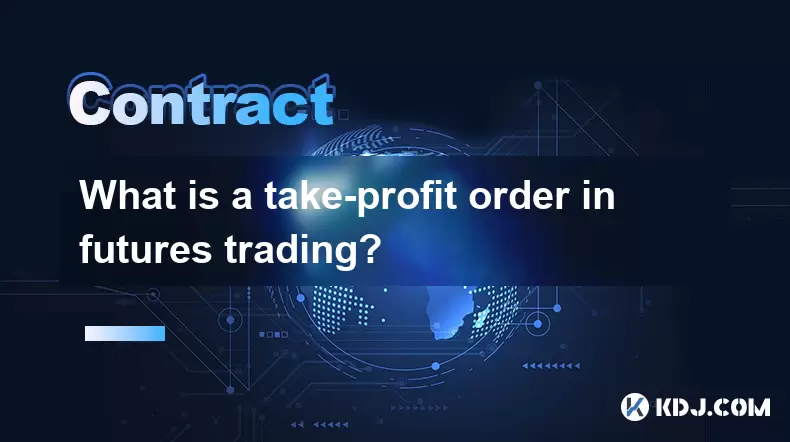-
 Bitcoin
Bitcoin $119300
1.07% -
 Ethereum
Ethereum $3730
3.87% -
 XRP
XRP $3.235
0.29% -
 Tether USDt
Tether USDt $1.000
0.00% -
 BNB
BNB $783.5
1.88% -
 Solana
Solana $188.7
0.25% -
 USDC
USDC $0.0000
-0.01% -
 Dogecoin
Dogecoin $0.2399
-0.44% -
 TRON
TRON $0.3157
2.37% -
 Cardano
Cardano $0.8254
1.94% -
 Hyperliquid
Hyperliquid $42.83
0.14% -
 Stellar
Stellar $0.4372
3.21% -
 Sui
Sui $3.859
4.91% -
 Chainlink
Chainlink $18.53
3.53% -
 Hedera
Hedera $0.2464
0.01% -
 Bitcoin Cash
Bitcoin Cash $519.8
2.46% -
 Avalanche
Avalanche $24.24
2.17% -
 Litecoin
Litecoin $113.7
0.73% -
 UNUS SED LEO
UNUS SED LEO $8.990
0.30% -
 Shiba Inu
Shiba Inu $0.00001390
0.21% -
 Toncoin
Toncoin $3.188
1.49% -
 Ethena USDe
Ethena USDe $1.001
0.02% -
 Polkadot
Polkadot $4.090
-0.91% -
 Uniswap
Uniswap $10.40
4.08% -
 Monero
Monero $326.6
3.12% -
 Bitget Token
Bitget Token $4.627
-0.42% -
 Pepe
Pepe $0.00001281
0.76% -
 Dai
Dai $1.000
0.01% -
 Aave
Aave $291.6
0.98% -
 Cronos
Cronos $0.1269
7.26%
What is a take-profit order in futures trading?
A take-profit order in crypto futures trading automatically closes a position at a set price to lock in profits, helping traders manage risk and avoid emotional decisions.
Jul 18, 2025 at 07:28 pm

Understanding Take-Profit Orders in Futures Trading
In the world of cryptocurrency futures trading, a take-profit order is a type of limit order that automatically closes a position once a specific profit level is reached. This mechanism allows traders to lock in gains without needing to manually monitor the market constantly. The core function of a take-profit order is to secure profits at a predetermined price point, ensuring that favorable market movements translate into realized gains.
Take-profit orders are crucial in managing risk and optimizing reward-to-risk ratios. By setting these orders, traders can define their exit strategy before entering a trade, which helps eliminate emotional decision-making during volatile market conditions.
How Does a Take-Profit Order Work?
A take-profit order functions by being attached to an open position or placed simultaneously with an entry order. Once the market reaches the specified price, the take-profit order executes and closes the trade. In futures markets, this applies to both long (buy) and short (sell) positions.
For instance, if a trader opens a long position on Bitcoin futures at $30,000 and sets a take-profit at $32,000, the system will automatically close the position when the price hits $32,000. Similarly, for a short trade initiated at $30,000, a take-profit set at $28,000 would trigger a close once that lower price is reached.
The execution of a take-profit order depends on market liquidity and price action. In fast-moving or illiquid markets, there may be slippage, where the actual execution price differs slightly from the set level.
Differences Between Take-Profit Orders and Limit Orders
While both take-profit orders and limit orders are used to execute trades at specific prices, they differ in context and application. A limit order is a general instruction to buy or sell at a defined price or better, whereas a take-profit order is specifically tied to closing an existing position to realize profits.
Limit orders can be used independently for opening or closing positions, while take-profit orders are typically linked to open trades or paired with stop-loss orders as part of a comprehensive risk management strategy.
Take-profit orders are conditional and only activate when the market moves favorably. Limit orders, on the other hand, may execute immediately if the set price is already available in the market.
Setting a Take-Profit Order: Step-by-Step Guide
To place a take-profit order effectively, traders must follow a structured process:
- Select the futures contract you wish to trade (e.g., BTC/USDT perpetual futures).
- Open a position either manually or through a conditional order.
- Navigate to the order settings or position panel on your trading platform.
- Enter the desired price level for your take-profit order.
- Ensure the order is linked to your open position or set it alongside your entry order.
- Double-check the parameters and confirm the placement.
Platforms like Binance, Bybit, and OKX offer intuitive interfaces where users can easily set take-profit levels. Some platforms allow traders to input values in absolute terms (e.g., $32,000) or as a percentage away from the entry price.
Always verify the price level against current market data before confirming the order. Incorrectly set take-profit levels can lead to premature exits or missed opportunities.
Common Mistakes When Using Take-Profit Orders
Despite their benefits, traders often make errors when setting take-profit orders. One common mistake is placing the take-profit too close to the entry price, which limits potential gains and results in frequent but small wins. Conversely, setting the target too far away may cause the order to never get triggered.
Another error involves ignoring support and resistance levels when determining take-profit points. These technical indicators provide valuable insights into where price might stall or reverse, making them essential for strategic placement.
Failing to adjust take-profit levels in response to changing market conditions can also lead to suboptimal outcomes. Traders should remain flexible and reassess their targets based on evolving trends and news events.
Frequently Asked Questions (FAQs)
Q1: Can I modify a take-profit order after placing it?
Yes, most trading platforms allow users to edit or cancel a take-profit order as long as it hasn’t been executed. This flexibility enables traders to adapt their strategies in real time.
Q2: What happens if the market gaps past my take-profit level?
If the price jumps suddenly due to high volatility or news events, the take-profit may not execute at the exact specified level. This situation is known as slippage and is more common in less liquid markets.
Q3: Is it possible to use multiple take-profit levels in one trade?
Yes, many advanced trading platforms support partial take-profit orders. Traders can set multiple levels to secure profits incrementally as the market moves in their favor.
Q4: Do all cryptocurrency exchanges support take-profit orders?
Most major exchanges like Binance, Bybit, and KuCoin offer take-profit functionality. However, smaller or newer platforms may have limited tools, so it’s important to check exchange features before trading.
Disclaimer:info@kdj.com
The information provided is not trading advice. kdj.com does not assume any responsibility for any investments made based on the information provided in this article. Cryptocurrencies are highly volatile and it is highly recommended that you invest with caution after thorough research!
If you believe that the content used on this website infringes your copyright, please contact us immediately (info@kdj.com) and we will delete it promptly.
- NFTs, Trademarks, and Judgments: A New York Minute on the Yuga Labs Case
- 2025-07-25 12:30:11
- Bitcoin, Nativo Resources, and Gold Operations: A New Era for Corporate Treasury
- 2025-07-25 12:50:11
- Bitcoin, Jim Cramer, and the US Deficit: A Wall Street Story
- 2025-07-25 10:30:11
- TGEs, Scalability & Privacy Tech: Decoding the Future of Blockchain
- 2025-07-25 10:30:11
- Crypto Payroll Revolution: How Stablecoins are Changing the Salary Game
- 2025-07-25 12:30:11
- Ben Askren, FUNKY Memecoin, and the Fallout: A New York Minute
- 2025-07-25 10:50:11
Related knowledge

Why is my Bitstamp futures position being liquidated?
Jul 23,2025 at 11:08am
Understanding Futures Liquidation on BitstampFutures trading on Bitstamp involves borrowing funds to open leveraged positions, which amplifies both po...

Does Bitstamp offer inverse contracts?
Jul 23,2025 at 01:28pm
Understanding Inverse Contracts in Cryptocurrency TradingIn the realm of cryptocurrency derivatives, inverse contracts are a specific type of futures ...

How to find your Bitstamp futures trade history?
Jul 23,2025 at 08:07am
Understanding Bitstamp and Futures Trading AvailabilityAs of the current state of Bitstamp’s service offerings, it is critical to clarify that Bitstam...

Can I use a trailing stop on Bitstamp futures?
Jul 23,2025 at 01:42pm
Understanding Trailing Stops in Cryptocurrency TradingA trailing stop is a dynamic type of stop-loss order that adjusts automatically as the price of ...

Can I use a trailing stop on Bitstamp futures?
Jul 25,2025 at 02:28am
Understanding Trailing Stops in Cryptocurrency Futures TradingA trailing stop is a dynamic type of stop-loss order that adjusts automatically as the m...

What are the trading hours for Bitstamp contracts?
Jul 24,2025 at 11:56am
Understanding Bitstamp and Contract Trading AvailabilityBitstamp is one of the longest-standing cryptocurrency exchanges, established in 2011 and head...

Why is my Bitstamp futures position being liquidated?
Jul 23,2025 at 11:08am
Understanding Futures Liquidation on BitstampFutures trading on Bitstamp involves borrowing funds to open leveraged positions, which amplifies both po...

Does Bitstamp offer inverse contracts?
Jul 23,2025 at 01:28pm
Understanding Inverse Contracts in Cryptocurrency TradingIn the realm of cryptocurrency derivatives, inverse contracts are a specific type of futures ...

How to find your Bitstamp futures trade history?
Jul 23,2025 at 08:07am
Understanding Bitstamp and Futures Trading AvailabilityAs of the current state of Bitstamp’s service offerings, it is critical to clarify that Bitstam...

Can I use a trailing stop on Bitstamp futures?
Jul 23,2025 at 01:42pm
Understanding Trailing Stops in Cryptocurrency TradingA trailing stop is a dynamic type of stop-loss order that adjusts automatically as the price of ...

Can I use a trailing stop on Bitstamp futures?
Jul 25,2025 at 02:28am
Understanding Trailing Stops in Cryptocurrency Futures TradingA trailing stop is a dynamic type of stop-loss order that adjusts automatically as the m...

What are the trading hours for Bitstamp contracts?
Jul 24,2025 at 11:56am
Understanding Bitstamp and Contract Trading AvailabilityBitstamp is one of the longest-standing cryptocurrency exchanges, established in 2011 and head...
See all articles

























































































